The CMYK method
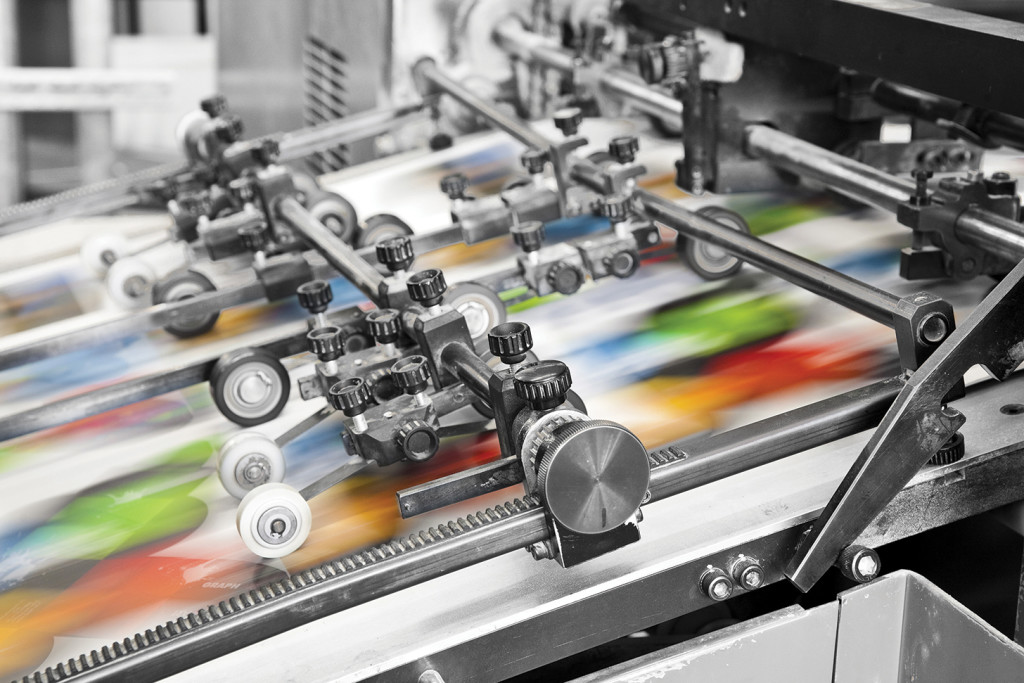
If you are dealing with a graphic project that will go to print or if you have already tackled projects for printed matter , such as business cards, brochures, catalogs or posters, surely you have used or have been instructed to use the CMYK color method .
We have already talked about color modes and RGB color mode on our blog.
In fact, managing color , measuring it, comparing it, defining it, is perhaps one of the most complicated but also the most fascinating aspects for those who do graphic design.
Precisely because this is a question designers deal with every day, it seems useful to me to explain in the clearest and most complete way possible what we mean when we talk about "color methods" . What is meant by CMYK? When and how should you use it?
Let's start from the beginning, follow me!
What does CMYK mean?
The acronym "CMYK" refers to the four colors that are used when working with this method and which make it possible to obtain all the others.
In detail:
- C stands for cyan , hence “cyan”
- M stands for magenta (in English use the same word we have in Italian, so no need to translate!)
- Y stands for yellow , therefore “yellow”
- Finally, K stands for key black , the black channel necessary to obtain a wider and more saturated variety of colors with this method (we'll talk more about it shortly)
Since it is a method that is based on the use of four colors, in Italian it is often also referred to as “ quadrichromy ”. The different color components, on the other hand, are more properly called channels .
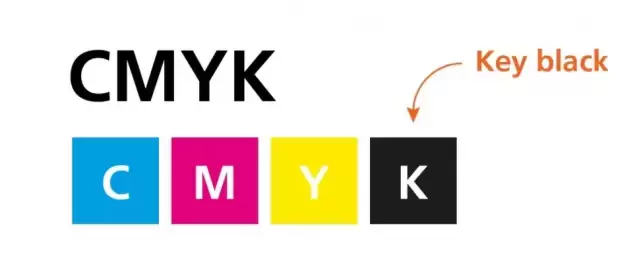
When we speak of CMYK color mode, therefore, we mean a reference system in which all the colors we can create are obtained by mixing different quantities of cyan, magenta, yellow and black.
Quantities are measured as a percentage : for each channel we will have a value between 0 and 100 .
For example, the red of the InsightAgency logo in CMYK is composed of 0% Cyan, 100% Magenta, 100% Yellow and 0% Black.
When and how is CMYK color mode used?
The CMYK color method is the reference system we use when we go to indicate which colors we want to obtain through letterpress printing.
The colors in this type of printing are obtained by mixing the four different inks that correspond to the channels in the right proportions.
When you mix colors made of matter – in our case ink, but it also applies to paint, pastels, etc – what happens is very different from what happens when the colors you mix are made of beams of light, such as, for example, in the screens.
We are talking about physical phenomena that have a big impact on how colors are created and catalogued, but also on their final rendering.
As far as the CMYK color method is concerned , the sum of colors understood as pigments takes place following the so-called subtractive synthesis . Let's see what it is.
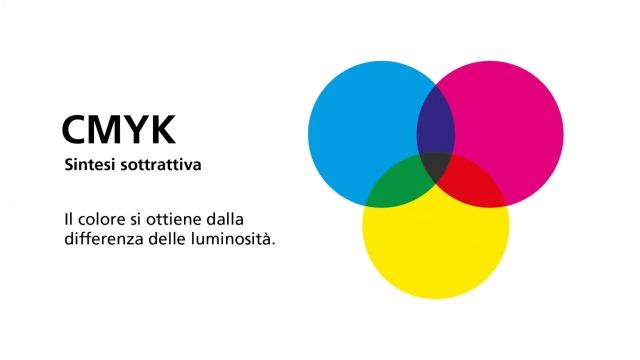
What is Subtractive Synthesis?
During letterpress printing, for example, to obtain a green, the machines print, very close to each other, more or less large dots of cyan ink and yellow ink : the result is a color that will be less bright than the two starting inks . This is because it adds up the ability of both to absorb (therefore subtract) light.
In fact, when we refer to this phenomenon we speak of "subtractive synthesis" .
The same mechanism explains why, when we mix dyes or pigments in the colors cyan, magenta and yellow, what is obtained is a grey-brown , i.e. a color with very low luminosity.
Give it a try: move away from light sources and keep your eyes closed for a while. What color are you seeing?
In all likelihood it is not a real black, but rather a very dark and very little saturated gray. It is precisely the "zero level" of the retina, at rest and free from light stimuli, and is very similar to the color obtained by combining cyan, magenta and yellow.
If mixing colored inks means losing brightness then perhaps you have already figured out what the main feature of the CMYK color mode is.
What colors can you get in CMYK?
Due to its specificity , with this method you will never be able to obtain all the colors you see on the screen (in fact, the RGB color method is used for digital projects), or particularly bright colours, such as fluorescent colours.
This is why, when working on graphics for a project to be printed in a print shop, it is advisable to start working already by setting the CMYK color mode.
Otherwise, you run the risk of having to redo the entire project because you discover that the colors you've chosen simply don't exist in the print.
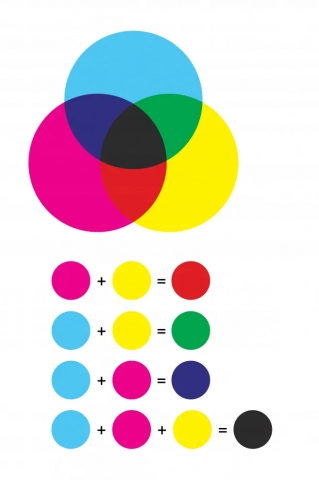
Beware of black
Adjusting the key black channel therefore also allows you to obtain different shades and intensities of black.
For example, to obtain a black ... Simply black, the adjustment that is spontaneous to set is this: C=0, M=0, Y=0, K= 100%. This is the "standard" black , which however once printed is a little dull. It's great for text or figure outlines.
If, on the other hand, you want a background full of black , I suggest you use the so-called "Rich Black" , which is obtained by setting these percentages: C=40, M=40, Y=40, K=100. It means that to the key black I'm going to add homogeneous percentages of all the other color channels to make the black I'll get in print fuller.
Another interesting possibility is to vary the percentages of warm or cold colors that I add to the key black. In this way, even the black I get will be colder or warmer, and will be able to conform, or on the contrary, stand out better in a project with a predominant tone.

What if, despite everything, CMYK isn't the right method for your project? There are of course alternatives.
Color modes beyond CMYK
The four-color process is the preferred system of letterpress printing because it is the one that allows to obtain the greatest number of colors with the least number of inks.
Today, however, in offset printing there are also machines capable of using, in addition to the four standard inks, up to 3 other colors (the secondary ones: orange, green, purple) and therefore arrive at a print that is based on a method defined as CMYK +3 . This greatly expands the range of colors available.
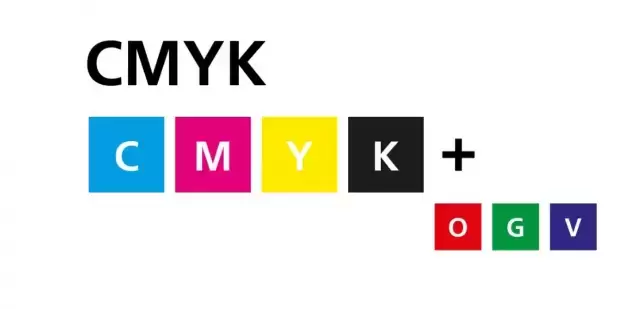
However, if your project does not have to go to print, or this color method does not suit your needs, there are alternatives .
First of all, we have already mentioned the RGB method , which allows us to encode the colors we see through light sources , like all screens.
If, on the other hand, you have particular printing needs and you want to obtain a specific colour , which does not exist in the CMYK gamut and which gives you the certainty of being perfectly compliant with your project, then the right solution is to resort to spot colours , for example the famous colors Pantone, which we will discuss in one of the next articles.
When you subscribe to the blog, we will send you an e-mail when there are new updates on the site so you wouldn't miss them.
By accepting you will be accessing a service provided by a third-party external to https://www.insightadv.it/


































































Comments